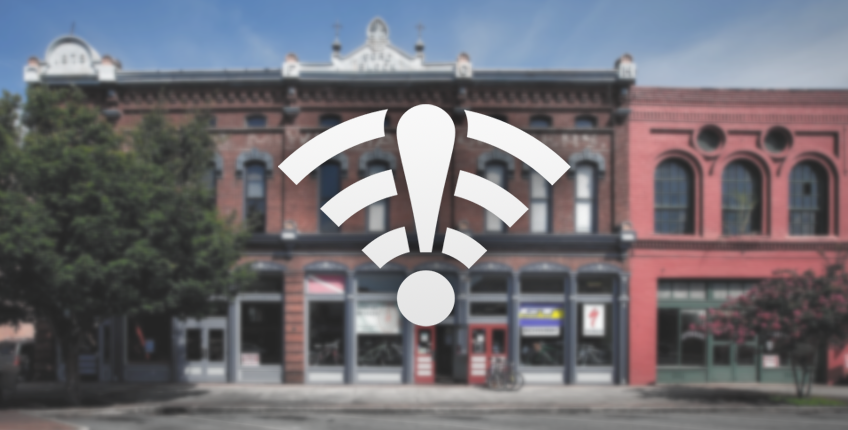Digital Distress: What is it?

Written by Roberto Gallardo and Benjamin St. Germain.
In 2019 one of us wrote two Medium posts introducing a new metric related to digital inclusion called digital distress. Since then, we know of several organizations and communities that have used this metric for awareness and planning purposes. Today, the need for such a metric will only increase given the upcoming digital equity planning component in the Infrastructure Investment and Jobs Act (IIJA) passed in late 2021. For this reason, we have tweaked the methodology and decided to offer a national interactive map using census tracts.
The inspiration for this digital distress metric came from well-known economic distress metrics that typically look at unemployment and income levels. However, a similar metric for digital distress was not available. Existing variables look primarily at broadband access and speed tests. While these have advantages and disadvantages, digital distress paints a different picture of the digital inclusion landscape.
Four variables from the U.S. Census American Community Survey were used: 1) the percent of homes with no internet access, 2) using only cellular data, as well as 3) the percent of homes relying on mobile devices only, or 4) having no computing devices. Data was obtained for all U.S. census tracts and categorized into low, moderate, and high digital distress.[1]
We know that homes relying solely on cellular data or not subscribing to the internet are not benefiting from digital applications due to limited data plans and restricting internet access to mostly outside the home. In addition, homes relying on mobile devices only or not owning computing devices make it harder to leverage digital applications due to smaller screens or no screens at all placing the home in digital distress. All Census tracts with households were included in the analysis.
Figure 1 shows the share of homes in the U.S. for each of the digital distress indicators. A little more than one-tenth of homes in the country had no internet access (11.8%) or relied only on cellular data to access the internet (11.1%). Close to 14% relied only on mobile devices while a little more than 8 percent did not have computing devices.
When looking at socioeconomic characteristics per census tract by digital distress, Figure 2 shows that roughly a little more than one-fifth of the U.S. population lived in high digital distress areas (21.4%) compared to close to one-third in moderate digital distress areas (32.9%) and close to 46% in low digital distress areas. In other words, more than half of the U.S. population lived in areas with moderate or high digital distress (54.3%). In addition, roughly 46.3% of children (under 18) and 32.5% of seniors (65 years or older) in the U.S. lived in moderate to high digital distress areas (not shown).
When it comes to race/ethnicity and poverty, Figure 3 shows the share of these groups by digital distress. Roughly two-thirds of the population living in low digital distress areas were White, non-Hispanic (66.2%) compared to one-third of minorities (33.8%). More than half of the population living in high digital distress areas were minorities compared to 48.7% of White, non-Hispanics. Regarding poverty, more than one-fifth of those living in high digital distress areas were poor (22.5%) compared to 7.7% living in low digital distress areas.
Figure 4 shows the share of workers, self-employed, and remote workers by digital distress. Roughly 49% of workers ages 16 and older lived in low digital distress areas while close to one-fifth lived in high digital distress areas (18.5%). The share of self-employed (includes incorporated and non-incorporated businesses) of workers 16 and older in low digital distress areas was 10.1% compared to 8.5% in high digital distress areas. Lastly, the share of remote workers (includes those working in agriculture) drops from 9.3% in low digital distress areas to 4.2% in high digital distress areas.
Figure 5 shows the share of population in each state by digital distress. Graph was sorted in descending order based on the share of population living in high digital distress areas. Mississippi had the highest share of its population living in high digital distress areas with 60% followed by Arkansas (52.1%) and Alabama (48%).
Lastly, the interactive map below (show fullscreen) shows digital distress at the census tract level in the country and was developed to quickly get a glance at spatial patterns and/or the level of digital distress and its metrics in your neighborhood. Click on any census tract to know its county, level of digital distress, and see each of the four variables used.
To conclude, remember that this is one metric that can help paint a picture of digital inclusion. The variables used are by no means comprehensive and this metric needs to be used along with other metrics to paint a more robust picture of this issue. For citation purposes please use the following reference: Purdue Center for Regional Development (2022), Digital Distress Metric.
Footnotes
- Note that the methodology used for this metric differs from the original metric. For this version, Census tracts were divided into three equal groups based on their share of homes per variable. Next, a score was calculated by adding up the number of variables per tract that were in the highest group. So, if a particular tract was in the highest of the three groups in all variables its score would be a 4. Lastly, tracts that were not in the highest group in any of the variables (score of 0) were deemed as “low”; tracts that scored in the highest group in 1-2 variables were deemed as “moderate”; and tracts that scored in the highest group in 3-4 of the variables were deemed as “high”.

Roberto Gallardo is the Vice President for Engagement and an Associate Professor in the Agricultural Economics Department. He holds an electronics engineering undergraduate degree, a... read more




